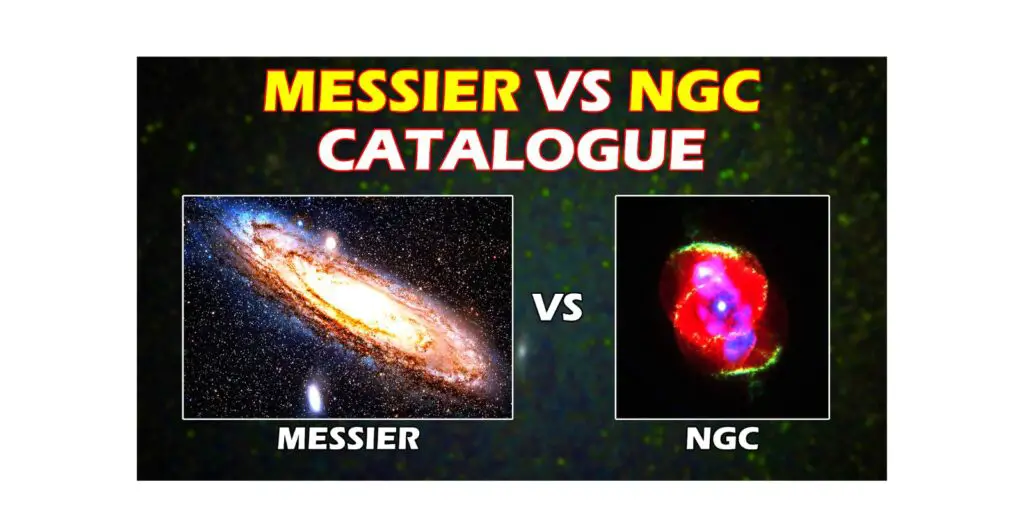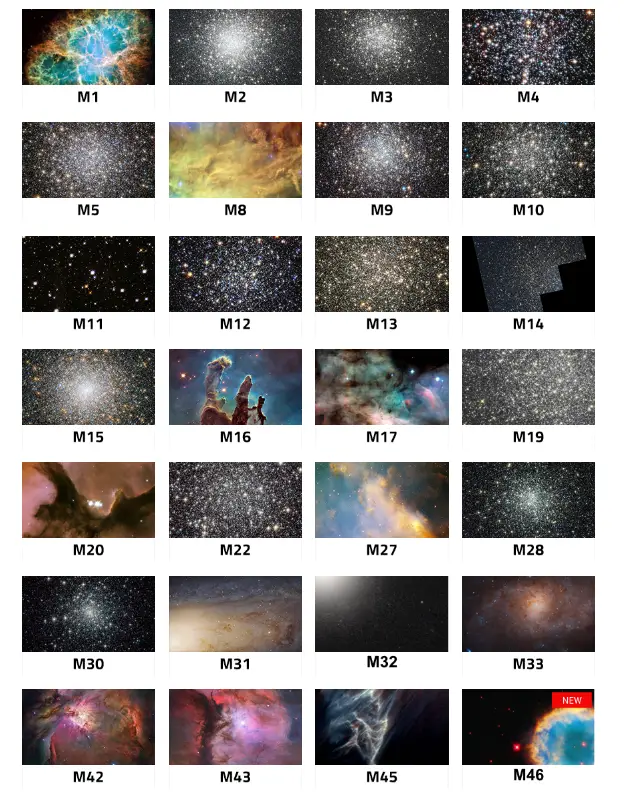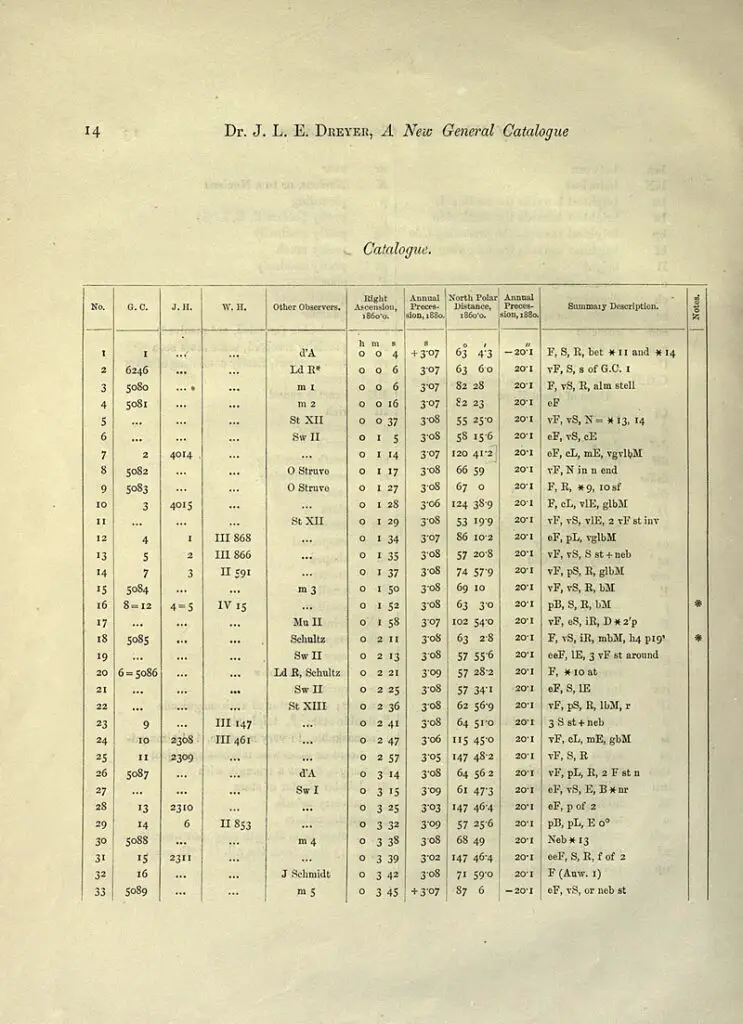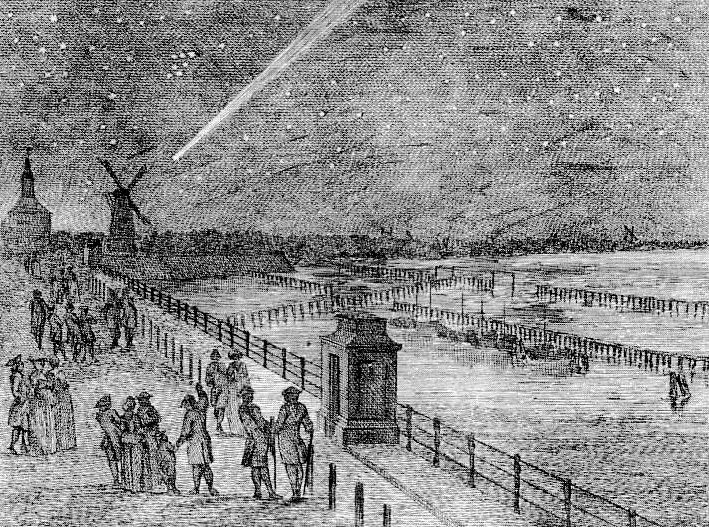
When you read about any celestial object, you must have read these abbreviations, such as M31 or NGC 224. Here, “M” stands for Messier, and “NGC” stands for New General Catalog. In astronomy, many stars are known simply by catalogue numbers. There are many different star catalogs that were made for different purposes over the years in history. But Messier and the NGC catalogues are the most popular catalogues every astronomer uses. So, today we will see what the differences are between these two.
These abbreviations are simply the catalog number for that object. An extensive variety of astronomical objects could be identified by these catalogs.
Messier Catalogue
The Messier catalogue is older and was created by Charles Messier. The first edition of the catalogue was created in 1774 with 45 objects in it. The next editions added more objects to this catalog. The final edition of this catalogue was published in 1967 with 110 objects in it.
Charles Messier never intended to add deep-sky objects to the catalog. He himself was a comet hunter. He started cataloging the nebulous, bright objects that used to be confused with comets. So, the primary purpose of the Messier catalog was to help the comet hunters to differentiate between permanent deep-sky objects and a comet. This was important during that period. Because it was often considered that comets were permanent objects. Which would lead to a lot of confusion while observing. The Messier catalogue includes 110 objects. Such as galaxies, nebulae, and star clusters that Messier believed to be mistaken for comets.

NGC Catalogue
The maker of the NGC catalogue is John Louis Emil Dreyer from the late 19th century. It is a more extensive catalogue of astronomical objects. The NGC catalogue includes 7,840 objects. It includes all the objects from the Messier catalogue and many more objects such as open clusters, planetary nebulae, and galaxies beyond our own galaxy, the Milky Way. Dreyer’s goal was to create a comprehensive catalogue of astronomical objects. His catalogue can be helpful as a reference for both amateur and professional astronomers.

As both these catalogues are popular. Objects which are present in both catalogues are mentioned by both names in the respective catalogue. For example, Orion Nebula has a messier name of M42 and the NGC name as NGC 1976. It is just easier for astronomers who use any one of the two catalogues.
As we mentioned in the beginning, all over history, many catalogs were created by many astronomers.
Why are only these two catalogs so popular?
One of the reasons for the popularity of these catalogues is that they are comprehensive. They include a wide range of objects, from galaxies and nebulae to star clusters and other deep-sky objects. This makes them extremely useful as a reference for observing and studying a variety of astronomical objects.
Both the Messier catalogue and the NGC catalogue are relatively old catalogs. The Messier catalogue is from back in the 18th century. The NGC catalogue dates back to the late 19th century. So, they have a long history of use, and they became part of the astronomical tradition.

The Messier catalogue is also popular among amateur astronomers because it contains some of the most famous and well-known deep-sky objects. Such as the Andromeda galaxy (M31), the Orion nebula (M42), and the Pleiades star cluster (M45). These objects are relatively bright and easy to find, making them ideal targets for amateur observation.
The NGC catalogue is also popular among professional astronomers. It includes a wide range of objects that are not in the Messier catalog. This allows for more detailed and specific observations and studies.
So each catalogue has its own reason and specialty for its usefulness.
Learn more about astronomy and stargazing on our website.





